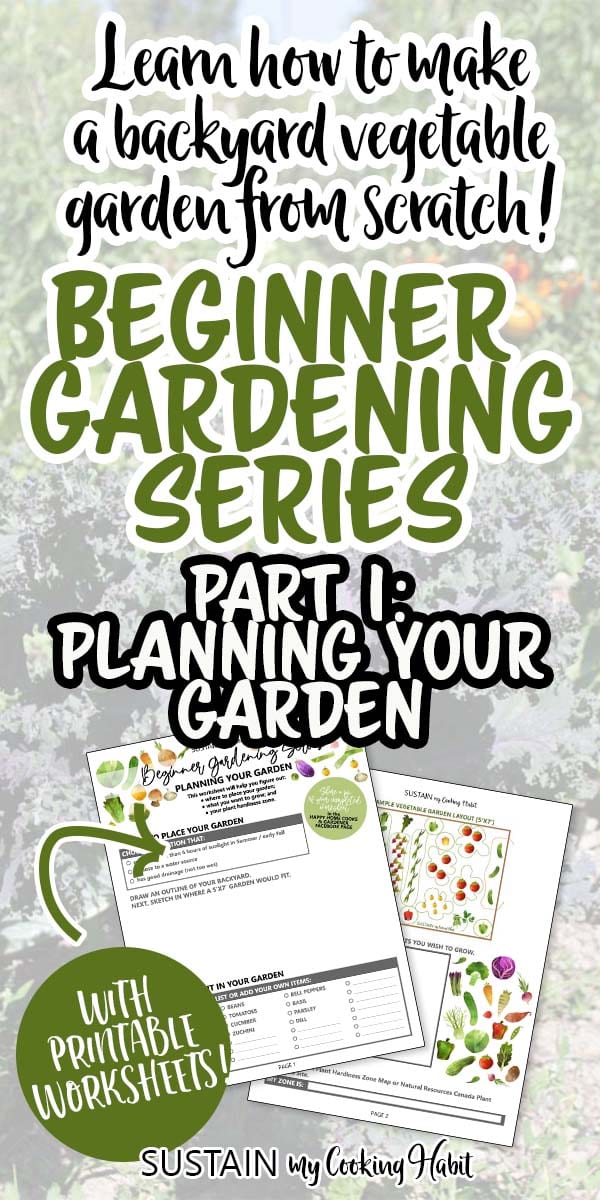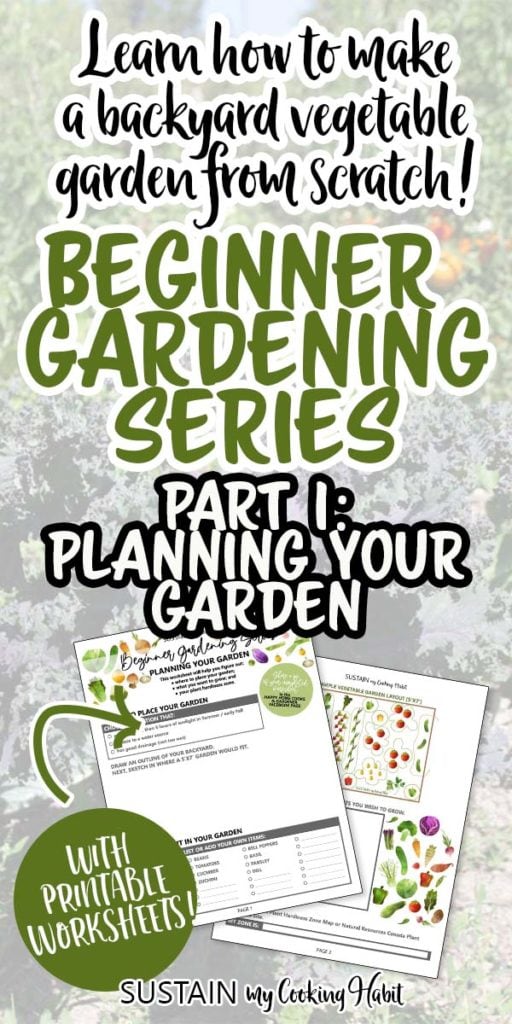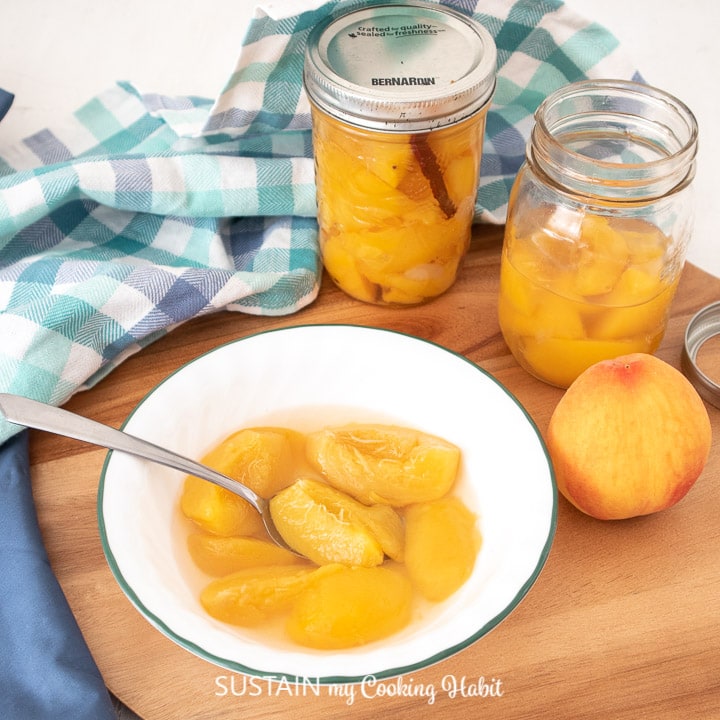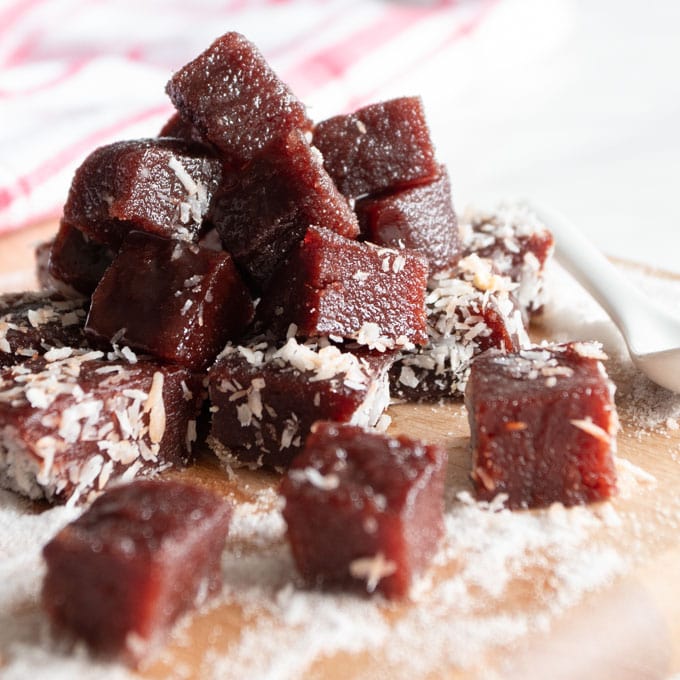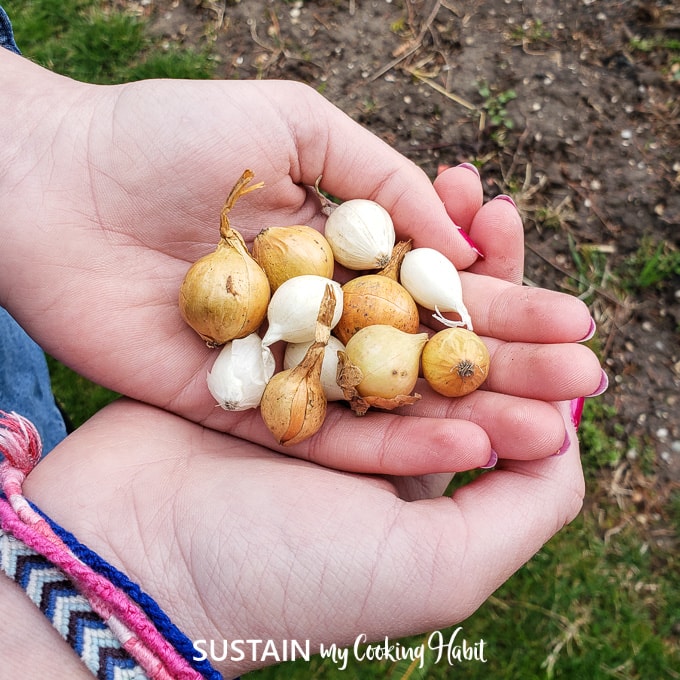Beginner Gardening Series -Part 1: Planning your Backyard Garden
Creating a small vegetable garden in your backyard is not as complicated as you might think. Over the next few weeks we’re going to take you through the process of making a 5’x7′ backyard garden step-by-step.
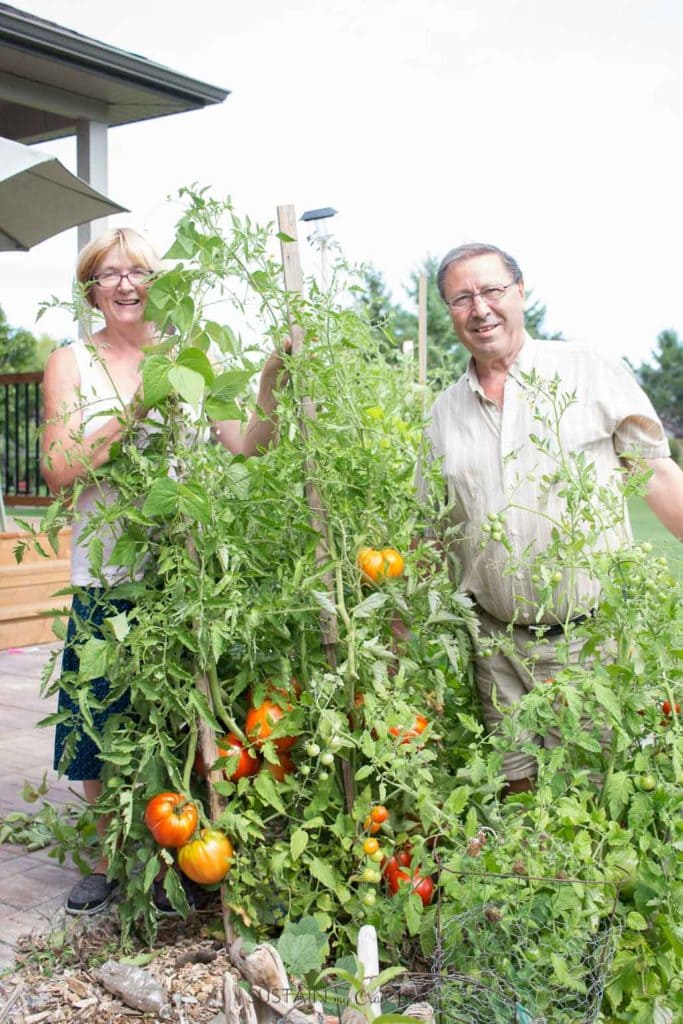
Gardening is a Family Affair
Ever since we were children our parents planted vegetable gardens. In each of the homes we lived in throughout our childhood there was at least a little patch with tomatoes, onions, lettuce and cucumbers.
Now that they’ve retired to the cottage our parents have huge gardens filled with these same veggies plus more. Beans, potatoes, radishes, garlic, peppers, zucchini and even squash, we enjoy the bounties of the garden from mid-May through November!
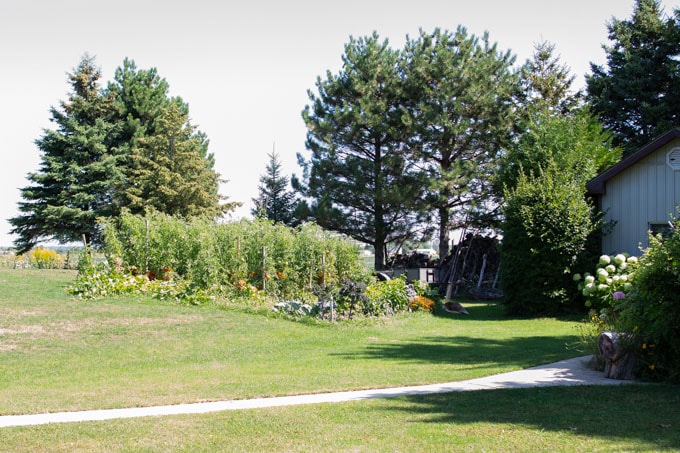
And it’s not just the huge gardens in the country: Sonja and I both have small vegetable gardens in our suburban backyards. Sonja’s raised vegetable garden is larger than mine, but even my little 3′ x 5′ patch yields plenty of tomatoes, kale, peppers, basil and parsley to enjoy fresh salads every day from August to October.
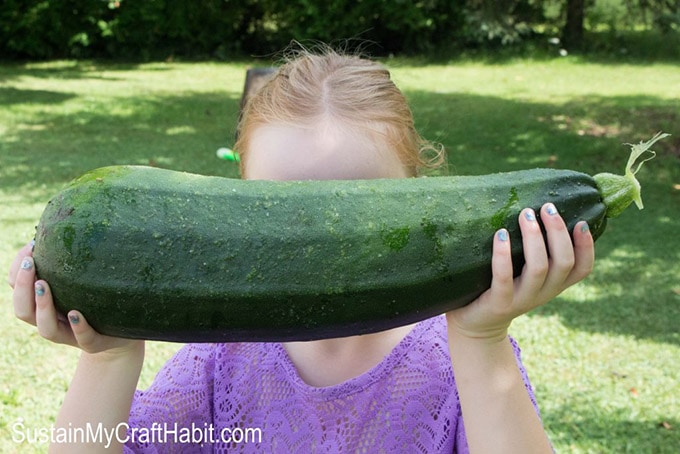
So, if you’ve been considering starting a little backyard vegetable garden, now’s the perfect time! Over the coming weeks we’ll be covering the following process, step-by-step.
Planning Your Backyard Garden (we are here)
Preparing the Backyard Garden for Planting
Supplies to Get for Making a Small Backyard Garden
How to Prepare a Garden Bed for Planting
Planting Seeds Indoors
Weeks 1-3: Planting Onions and Lettuce Seeds Outdoors
Weeks 2-4: Planting Beets Outdoors
Garden Maintenance (coming soon)
Weeks 6-8: Planting Seedlings to the Garden (coming soon)
Planting Garlic in the Fall for Next Season
Troubleshooting (coming soon)
First Harvest! (coming soon)
Moreover, we’ll be doing it together! Be sure to join the Happy Homecooks and Gardeners Facebook Group where we’ll be answering each others’ questions, sharing our gardens as they grow and troubleshooting along the way.
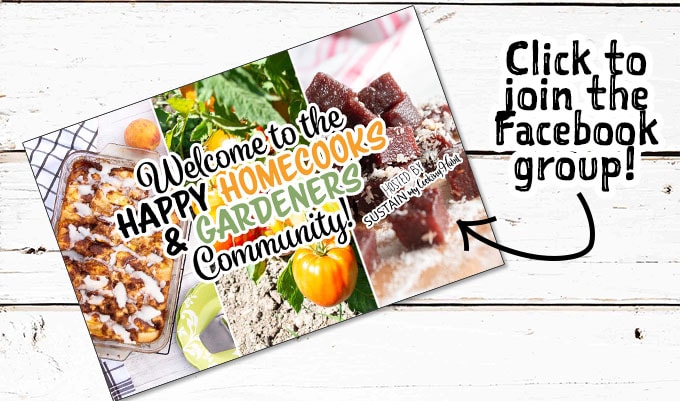
Let’s get started with planning our gardens. Do help you out, we’ve created this handy worksheet. Just print and download.
The first questions you need to answer are:
1) Where to place the garden?
2) What to plant in the garden?
3) Will it grow?
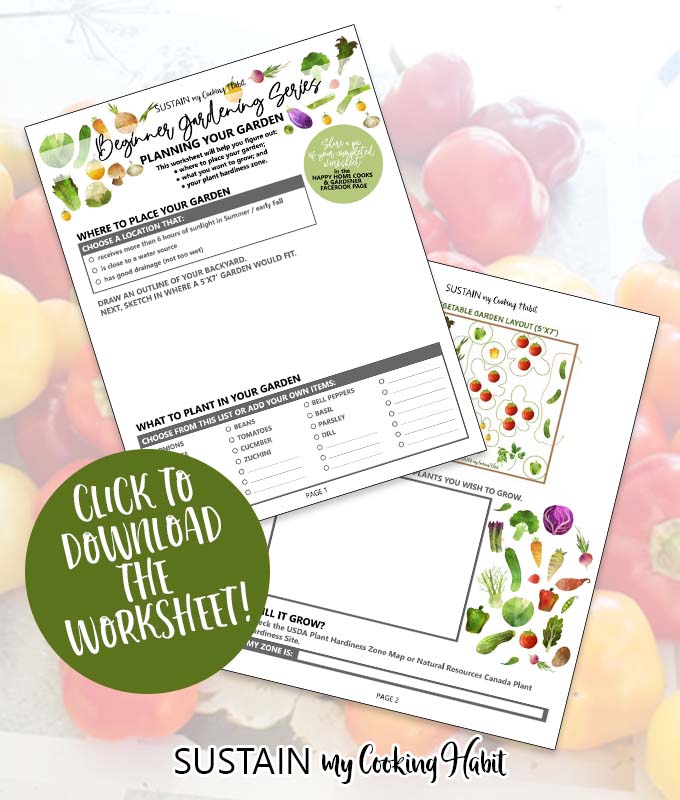
Where to Place the Garden?
Sun, sun, sun!
This is the key consideration when thinking about where to place your garden. You want to make sure that it receives about 6 hours of FULL SUNLIGHT. Thus overly shady areas will not work. Also remember that sunlit areas are different in the spring then summer, thus plan accordingly.
You also want to make sure that the area has good drainage. Plants won’t grow in areas which receive and/or hold too much water.
What to Plant in the Garden?
The simplest answer is: plant what do you like to eat!
In our minds the following are a MUST in any veggie garden: tomatoes, lettuce, peppers and cucumber – the basis of any decent salad!
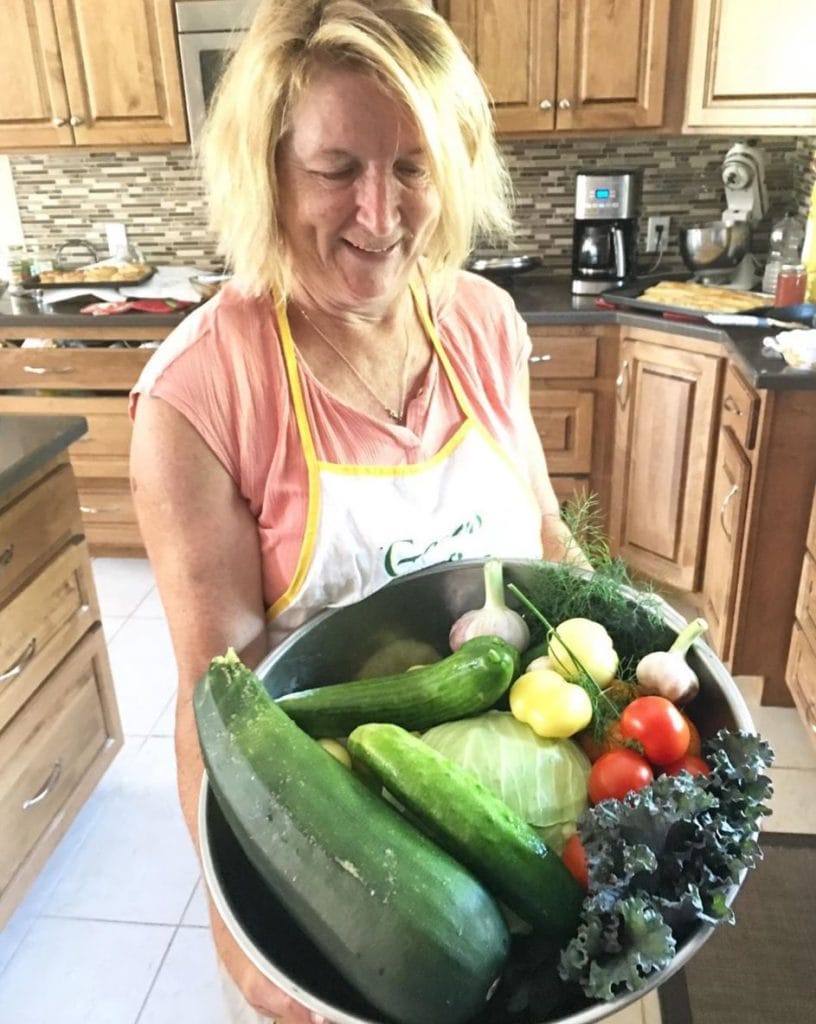
If this is your first time gardening, start with a few of your favorite veggies. You can always add more next year!
To help you get started we’ve “grown” a sample garden for you.
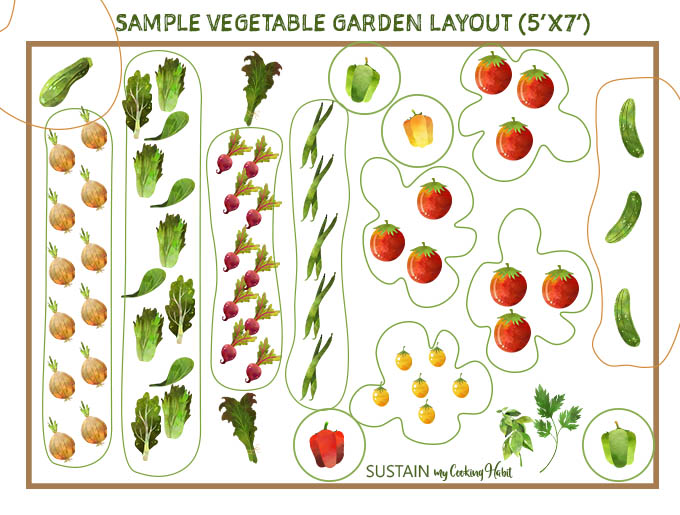
From left to right you’ll see it has onions, lettuce, beets and kale, beans, tomatoes and herbs. Peppers are planted in several places. If you have the extra space you can add a zucchini plant in the top right corner which will take over the space as you pick your onions and lettuce. Cucumber plants can be placed on the right edge of the garden if you have space for the vines to grow or climb (i.e. a fence or lattice).
Is there anything missing in this garden that you would like to grow? Complete the Garden Preparation worksheet and share a picture of it in the Happy Homecooks and Gardeners Facebook Group for feedback and ideas.

Will it grow?
Now that you’ve decided what you want to have growing in your garden, you’ll want to double check that it’ll truly grow in your climate.
- In the US, you can check the USDA Plant Hardiness Zone Map to determine yours.
- In Canada we use the Natural Resources Canada Plant Hardiness Site to figure out ours, which is Zone 6a/6b.
This is important to know as we go on to the next section of picking seeds and plants which will grow best in your area!
Did you find this planning exercise helpful?
Like it? Pin it for later!
